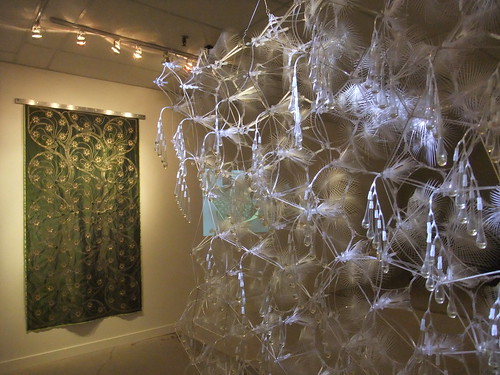
IMBLANKY by RAD on the left and Cloud Brocade by Philip Beesley on the right
I did not have an opportunity to post last month, but there were a number of interesting exhibits in Toronto, thanks to TODO the Toronto Design Offsite festival (part of the IDS). The premise of ‘STITCHES: Suzhou Fast Forward’ fascinated me. The show was at the Toronto experimental design centre and gallery, WORKshop, below ground and adjacent to Bay subway station. It promised to use the exquisite traditional craftsmanship of silk embroidery from China, as a sort of jumping off point for contemporary Canadian designers, architects, inventors and artists to riff on theme of embroidery. The show included seven hand-crafted embroidery pieces from the Zhou XueQing Embroidery Art Center in Guangdong, China, depicting luminous natural scenes with birds, flowers and landscapes in subtle, iridescent silk threads, some as fine as hair. They even provided magnifying glasses to really see the incredible detail.
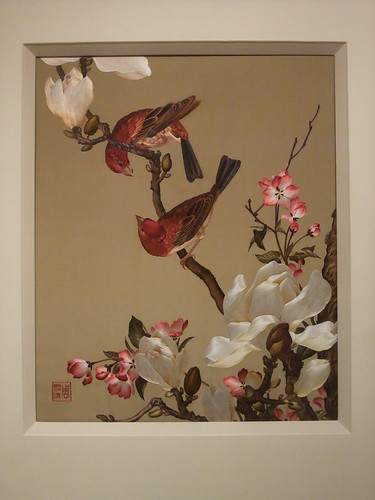

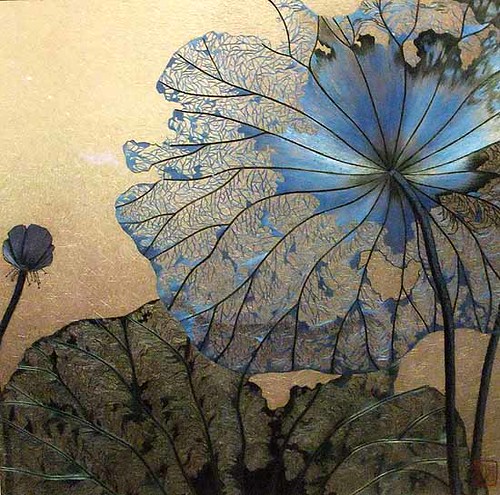
The contemporary response played on the idea of embroidery. Eric Boyd from Hack Lab combined machine embroidery with a pretty (yes, pretty!) open source microcontroller called LilyPad Arduino, which was designed for ‘wearable’ applications, sewed to fabric employing electrically conductive thread. This allowed him to have changing patterns of flashing LED sequins. The Responsive Architecture at Daniels RAD team showed IMBLANKY, which appeared to be a green taffeta blanket with a modern, stylized pattern of bronze flowers. On closer inspection, each ‘flower’ is a tilt sensor made of conductive fabric, with the pattern of ‘stems’ actually acting as a circuit. Projected onto the wall was a demonstration of the blanket’s ‘sense’ of its own position: a short film showed a person moving the blanket and the simultaneous computer model produced from its data of its own 3D shape. Suspended from the ceiling was architect Philip Beesley’s Cloud Brocade, a ‘geotextile’. This is a strange and beautiful sculpture, like those of his you may have seen at Luminata or Nuit Blanche. A delicate net of airy, white, plastic flowers, hide hypodermic needles, through which they might inhale useful chemicals from the environment and collect them in tiny bulbs. He imagines a future where microprocessors and sensors embedded in art and architecture can play a role interactively in our environment – without ever forgetting aesthetics and design. Specific Objects Inc. and Steele and Tomczak each employed digital machine embroidery to mimic the detail of the Suzhou pieces in portraying the glacial formation of Moraine and all 58 km of Yonge St. in Street of Heaven, respectively. Williamson Chong Architects decided to add further dimensions to embroidery, presenting 3D printed art objects and a holographic projection, along with 2D prints.

Circuit Stitching (front and back) by Eric Boyd, Hack Lab
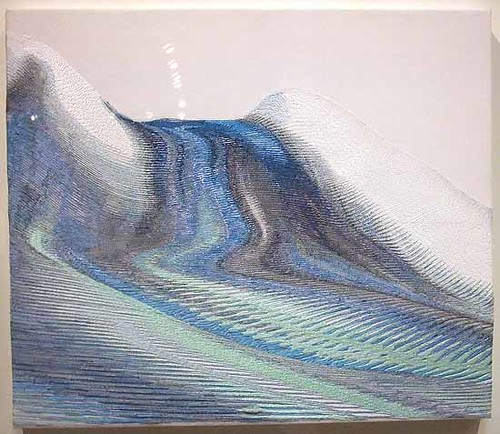
Moraine by Specific Objects Inc.
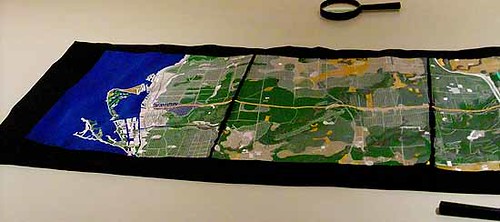

Street of Heaven by Steele and Tomczak

Stitches: Interstices by Williamson Chong Architects
I’ve always had great respect for needlework and the Chinese pieces are truly exquisite. I love how broadly the theme has been interpreted by those working in contemporary and perhaps even futuristic media. Imagine how both the ancient and the boundary-pushing, interactive contemporary designs could play in our own homes!






No comments:
Post a Comment